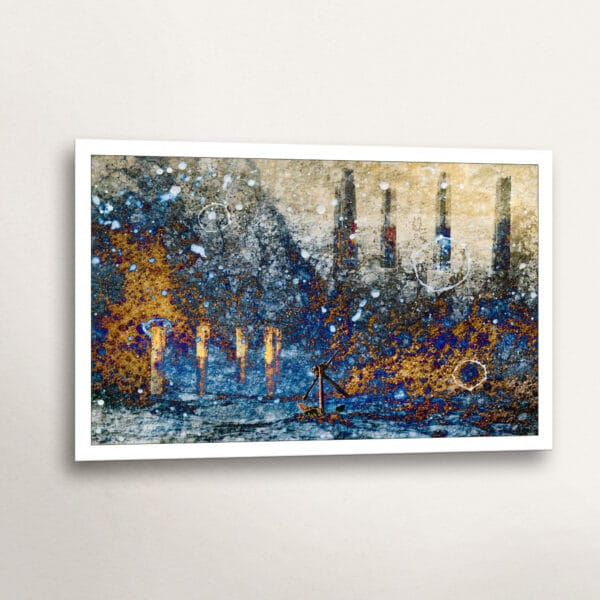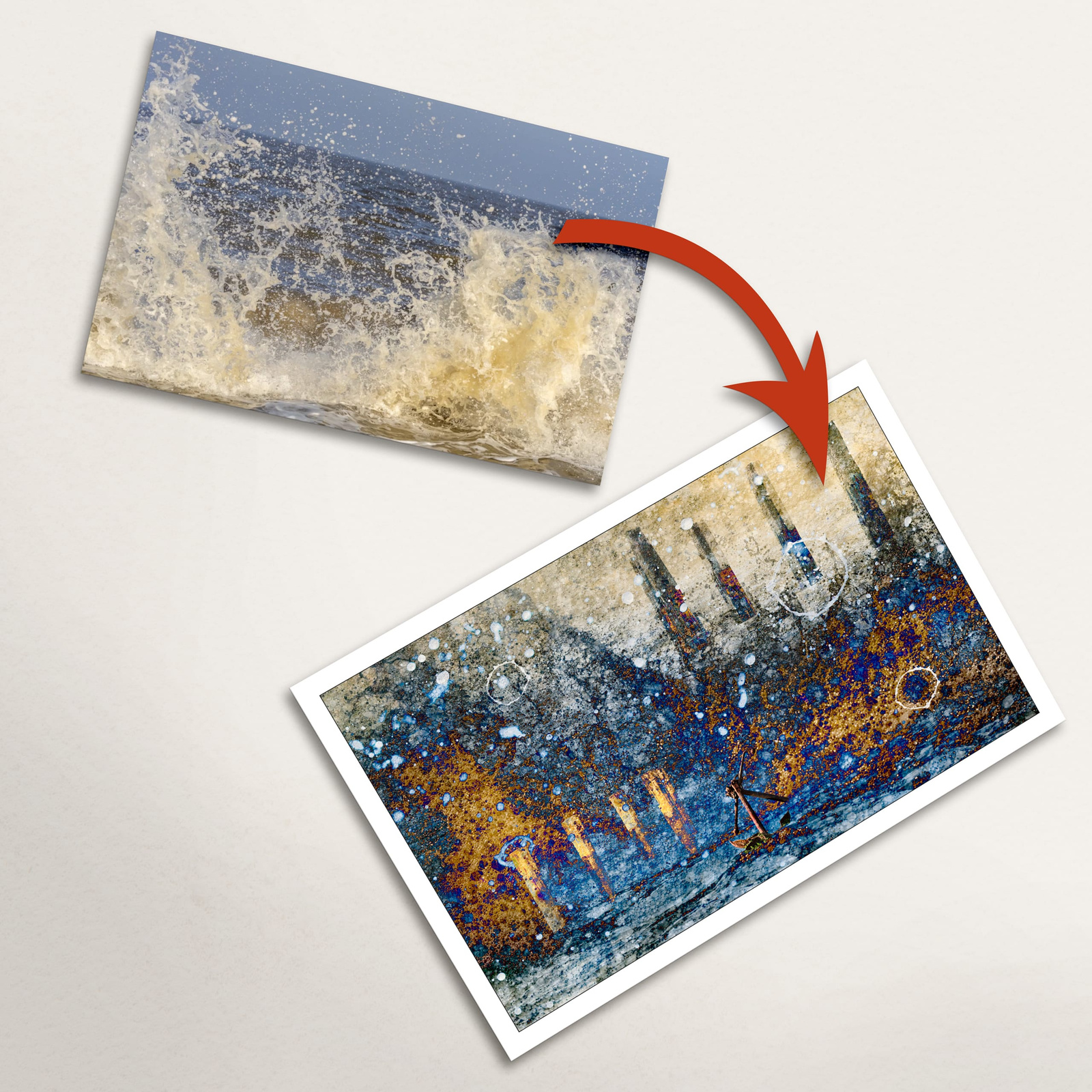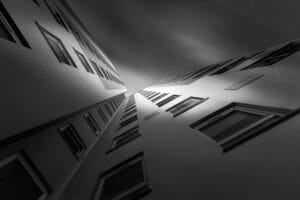Where Realism Becomes Metaphor
What begins as a photograph of crashing waves—raw, kinetic, and unfiltered—becomes something else entirely. In this short process video, I reveal how The Mariner’s Dream #3 came to life: not through a single moment, but through a series of deliberate choices, layered textures, and quiet interventions.
The video captures my working method in Photoshop, where I combine multiple photographs, waves, spray, and fragments of nautical architecture, into a single, cohesive image. You’ll see me rotate and resize elements, test different blending modes, and gradually build a composition that feels both familiar and uncanny. The inclusion of maritime structures adds a sense of place and memory, anchoring the abstraction in something tactile and lived.
This isn’t a tutorial. It’s a glimpse into the way I think: how I move from realism to metaphor, from documentation to dream. The final artwork retains the energy of the original wave, but refracts it through colour, texture, and emotional ambiguity. It’s a piece that invites reflection: on the sea, on memory, and on the stories we project onto both.

The Final Artwork: The Mariner’s Dream #3
Available now as a museum-quality giclée print in multiple sizes, framed or unframed. Each print is crafted with archival inks and heavyweight paper, preserving every detail of the layered composition.
Watch the Process
The video below shows the full transformation from the original wave photograph to the final artwork. It’s a timelapse of intuition, experimentation, and quiet decision-making.
What you’ll see is a condensed glimpse of a much longer journey. The ten-minute video compresses many hours of meticulous work: selecting and refining source images, testing compositions, and blending textures until the piece begins to breathe. It’s not a tutorial; it’s a visual distillation of the creative process, shaped by instinct, memory, and narrative intent.
Beyond the technical steps, this process reflects a kind of visual meditation. Each adjustment, whether it’s the angle of a spray fragment or the opacity of a pier, serves a narrative purpose. The nautical structures aren’t just compositional anchors; they evoke memory, solitude, and the passage of time. What emerges is not just an image, but a psychological seascape: part observation, part invention.









5 Comments
I’m curious—do you find yourself more drawn to the raw realism of a crashing wave, or to the dreamlike, layered interpretation that emerges through artistic transformation like this one?
paulnewson.art both have appeal…..if I had to pick the overlaying of the industrial image with high seas might just pip it
Steve Thompson Thank you Steve. I agree, but I’m biased because I spent hours putting it together. It’s good to know what someone else thinks too.
paulnewson.art good work mate!
Steve Thompson Thank you.